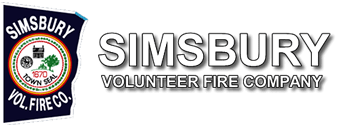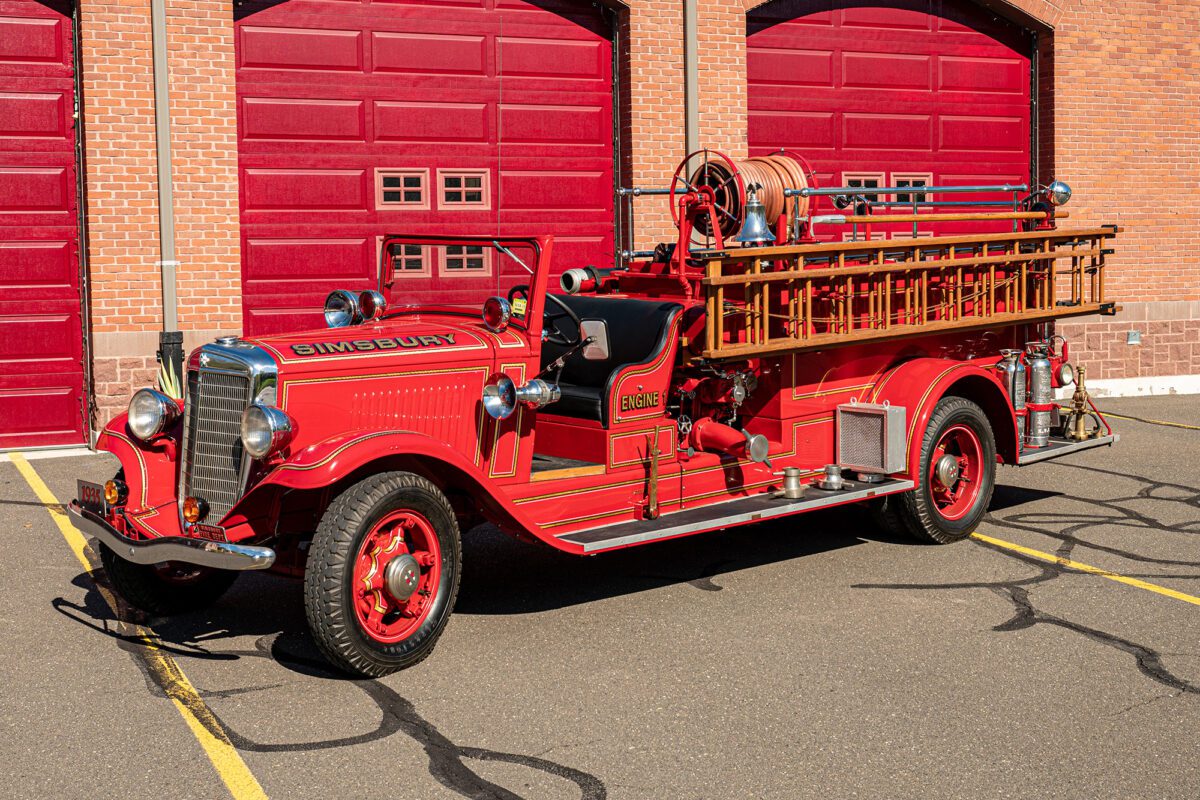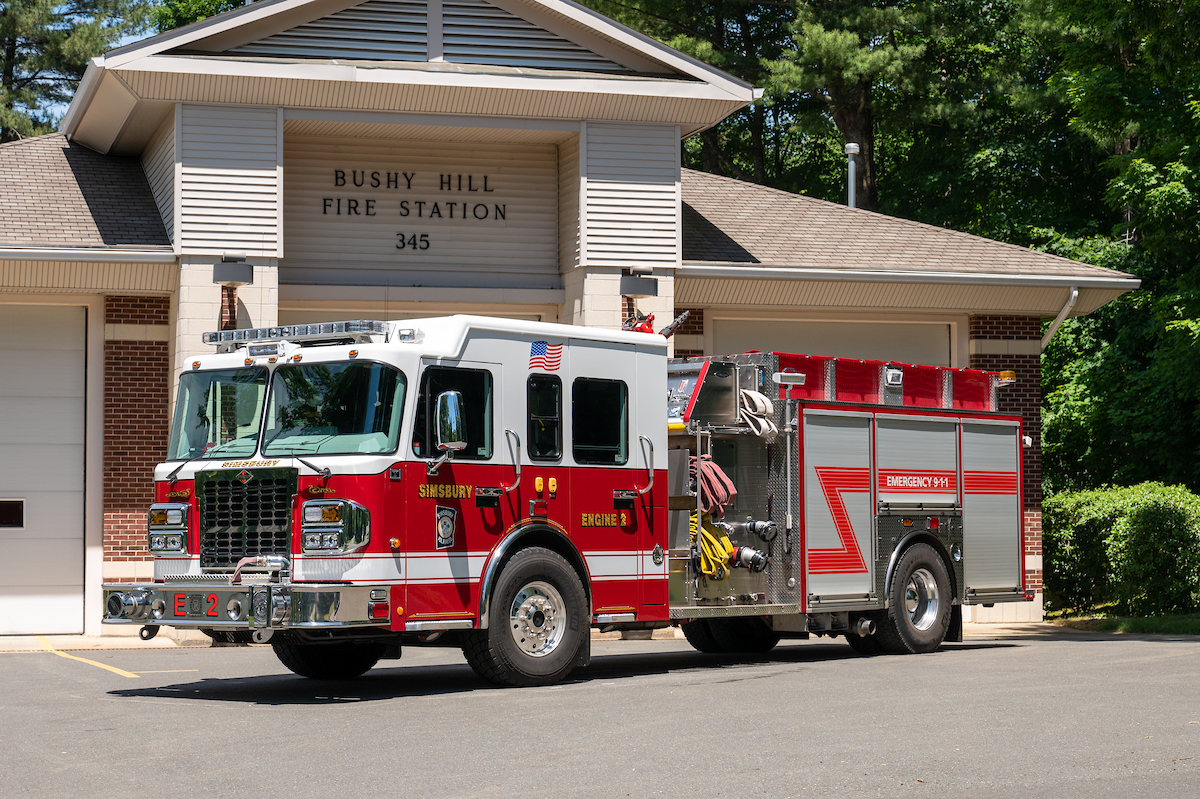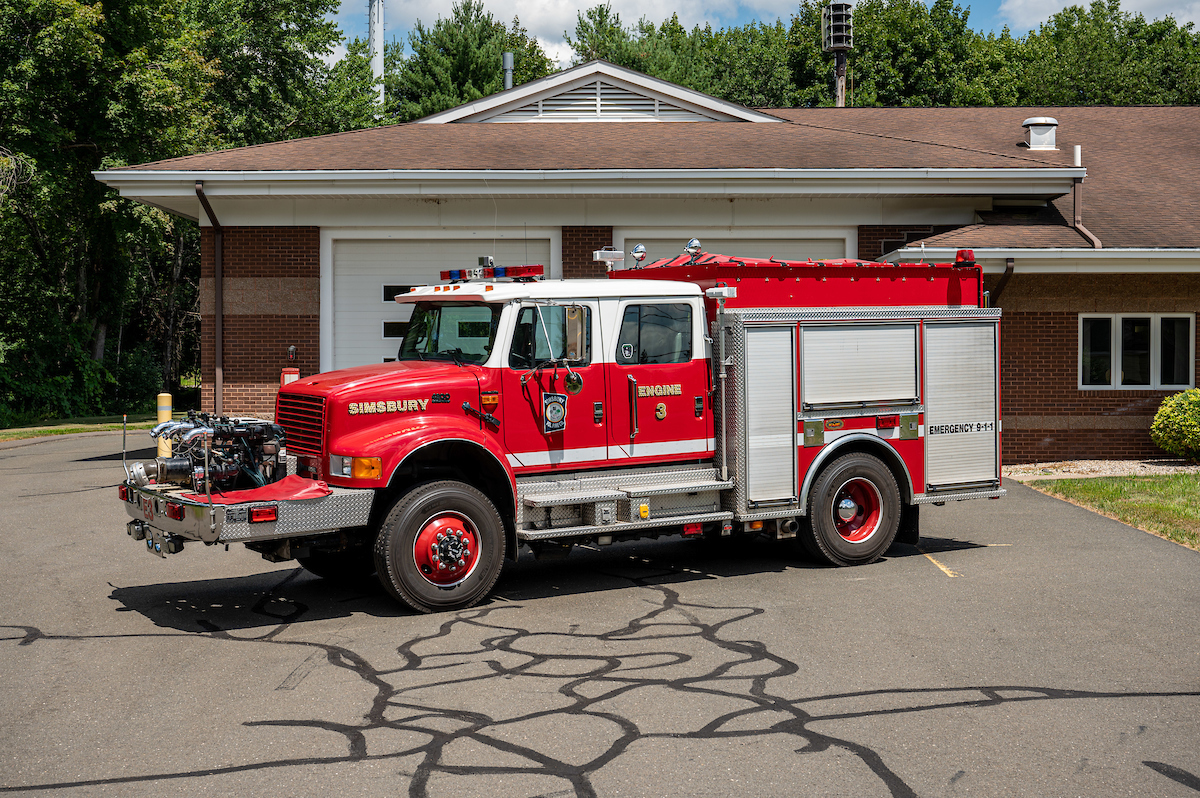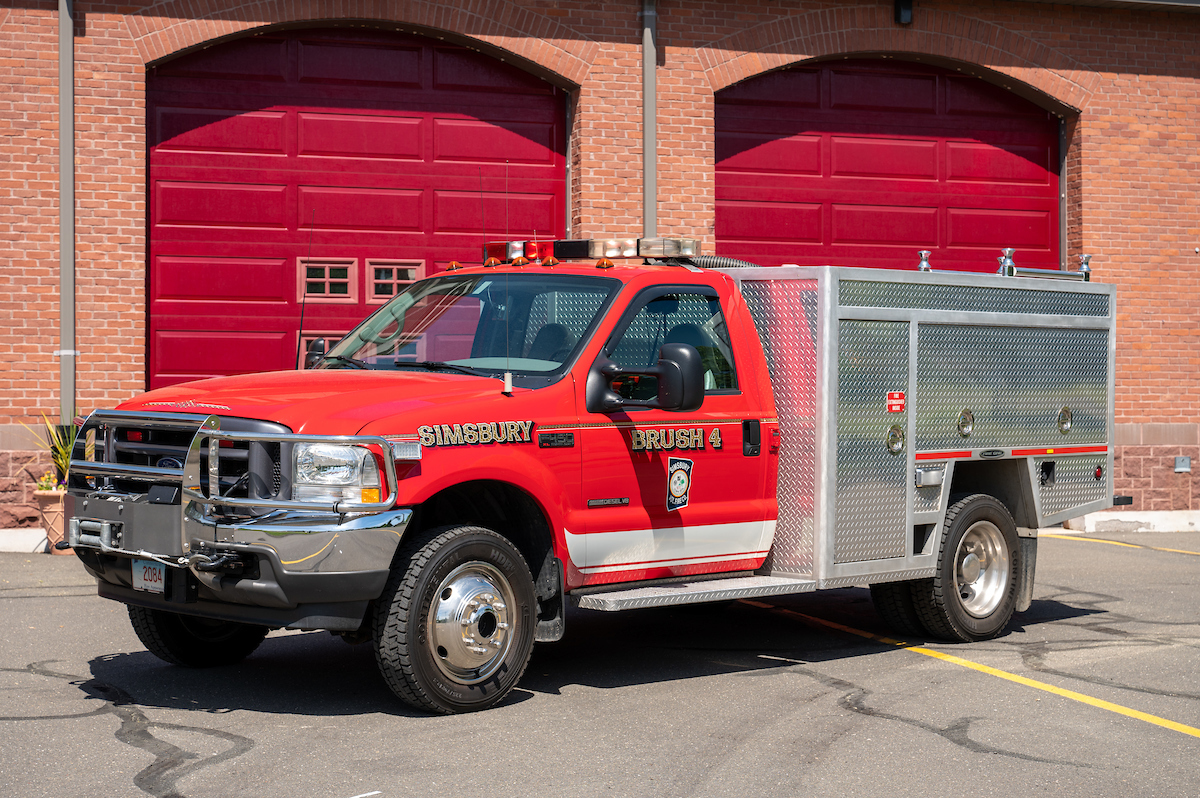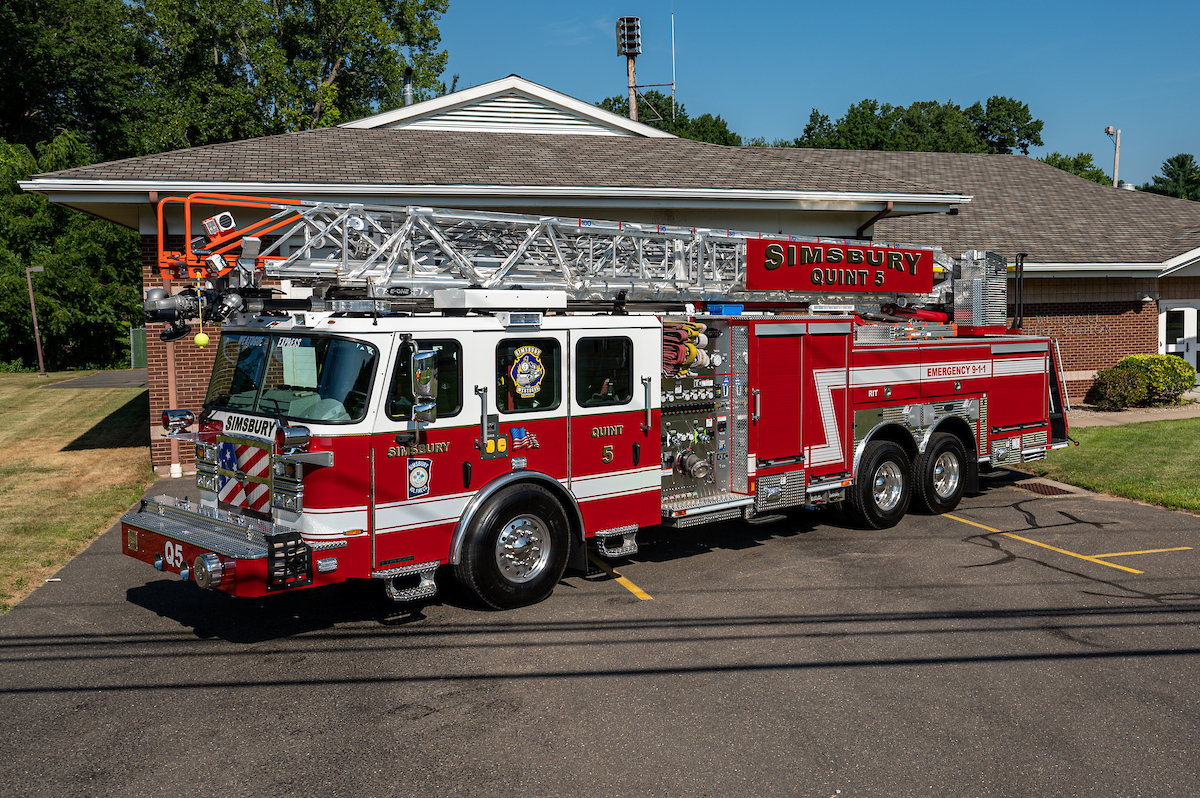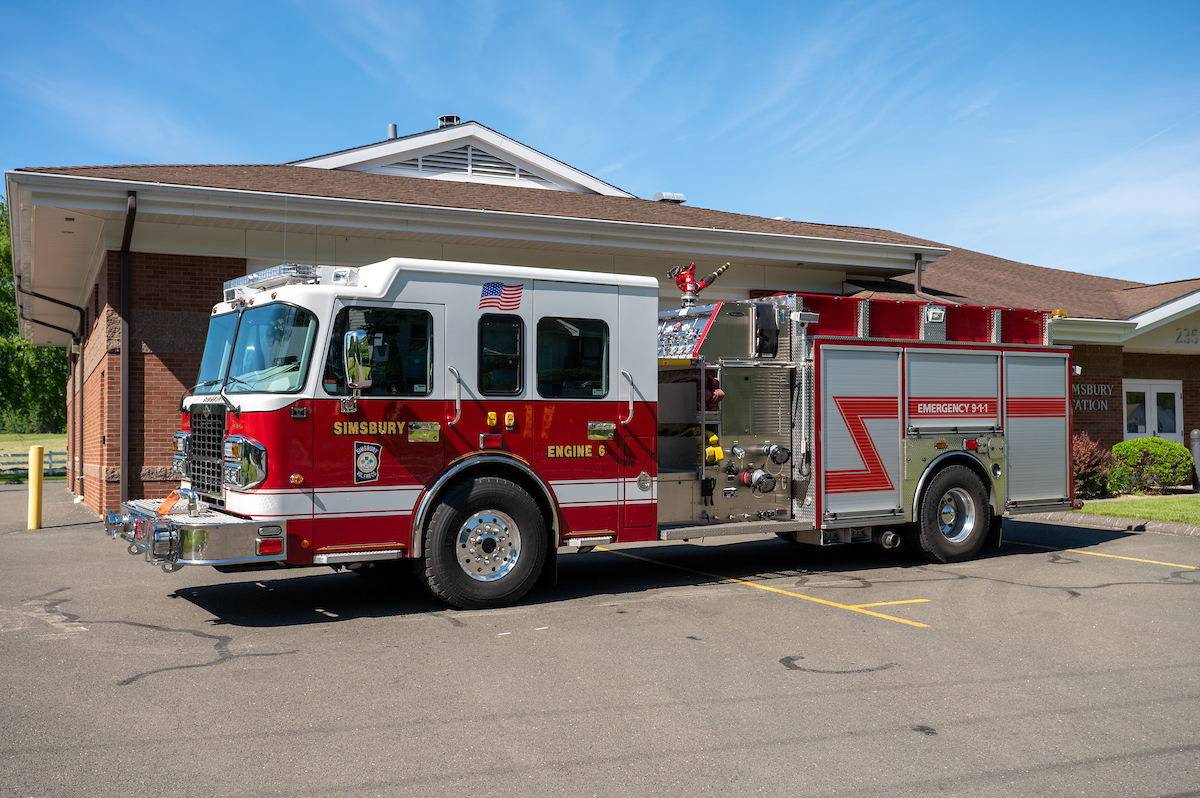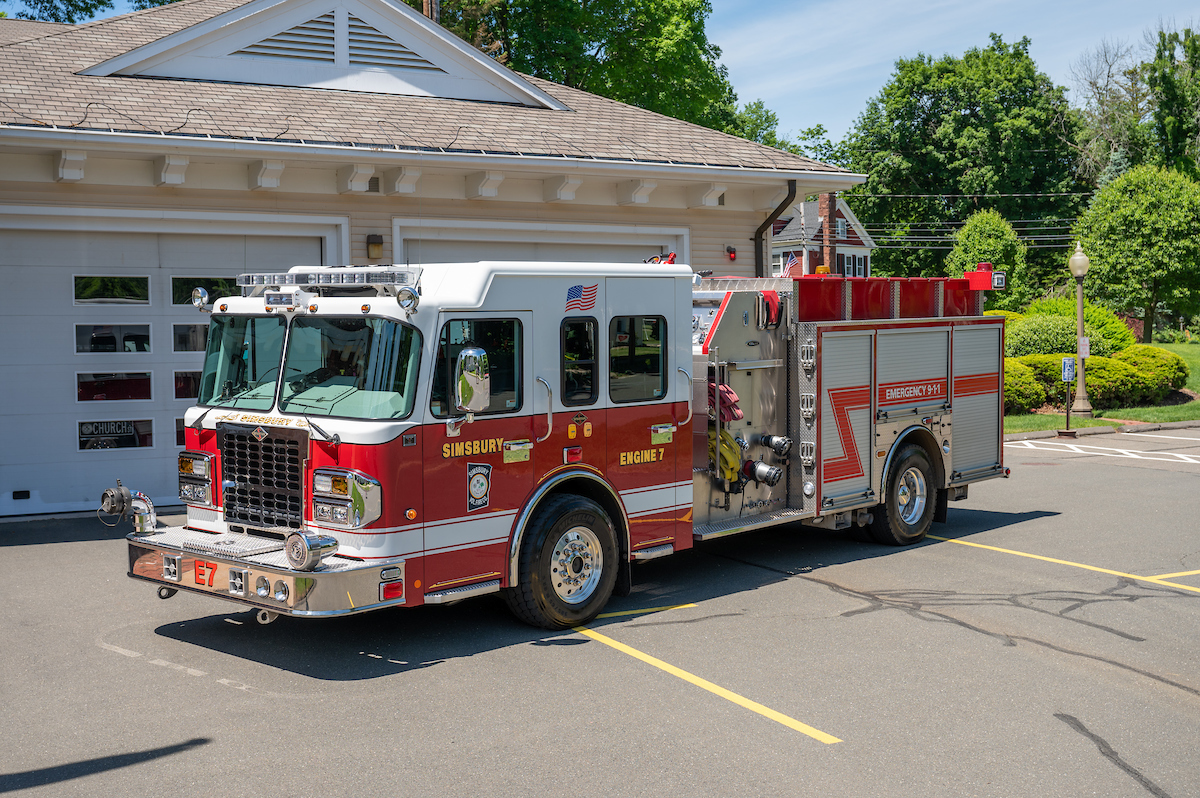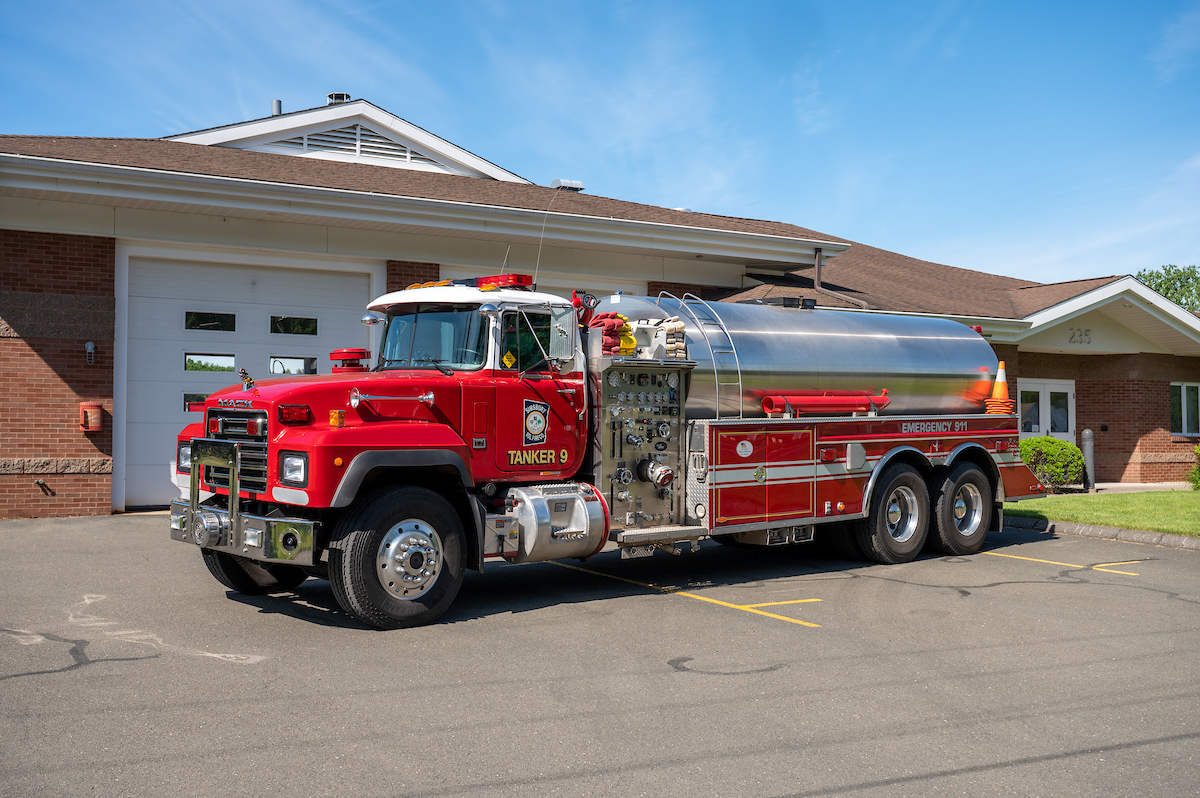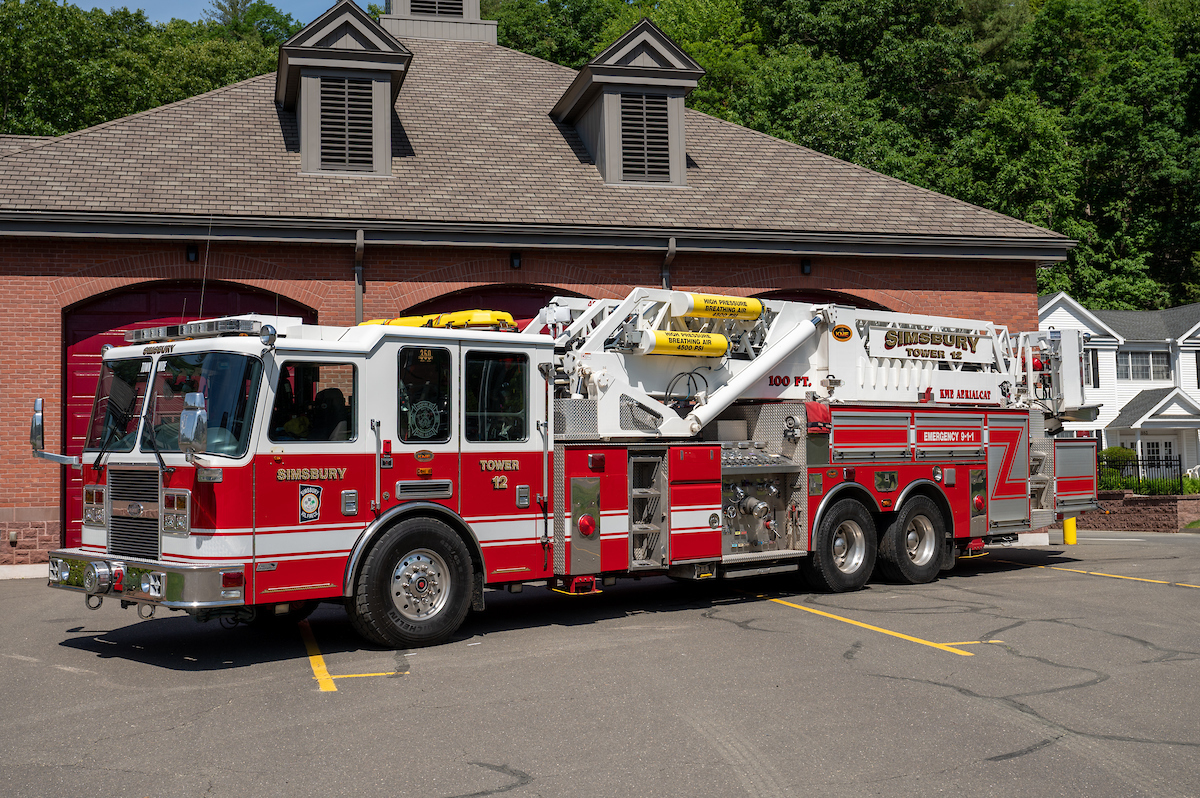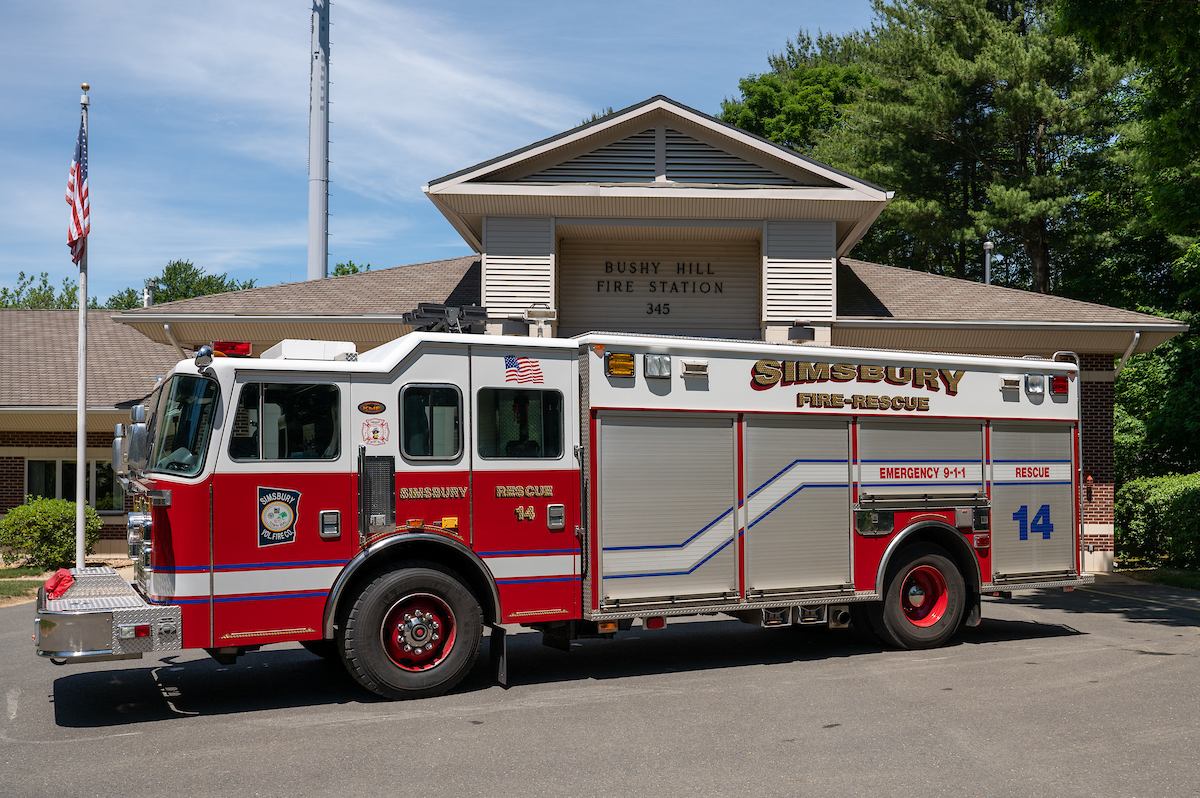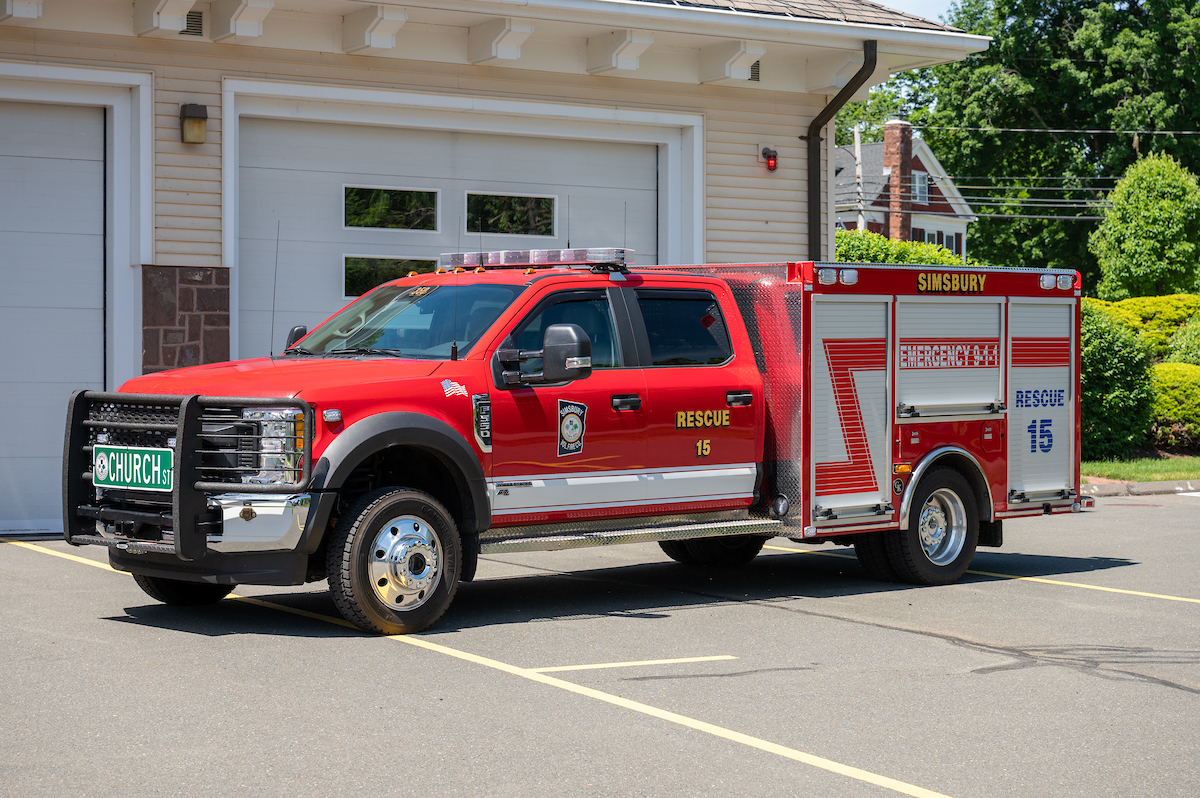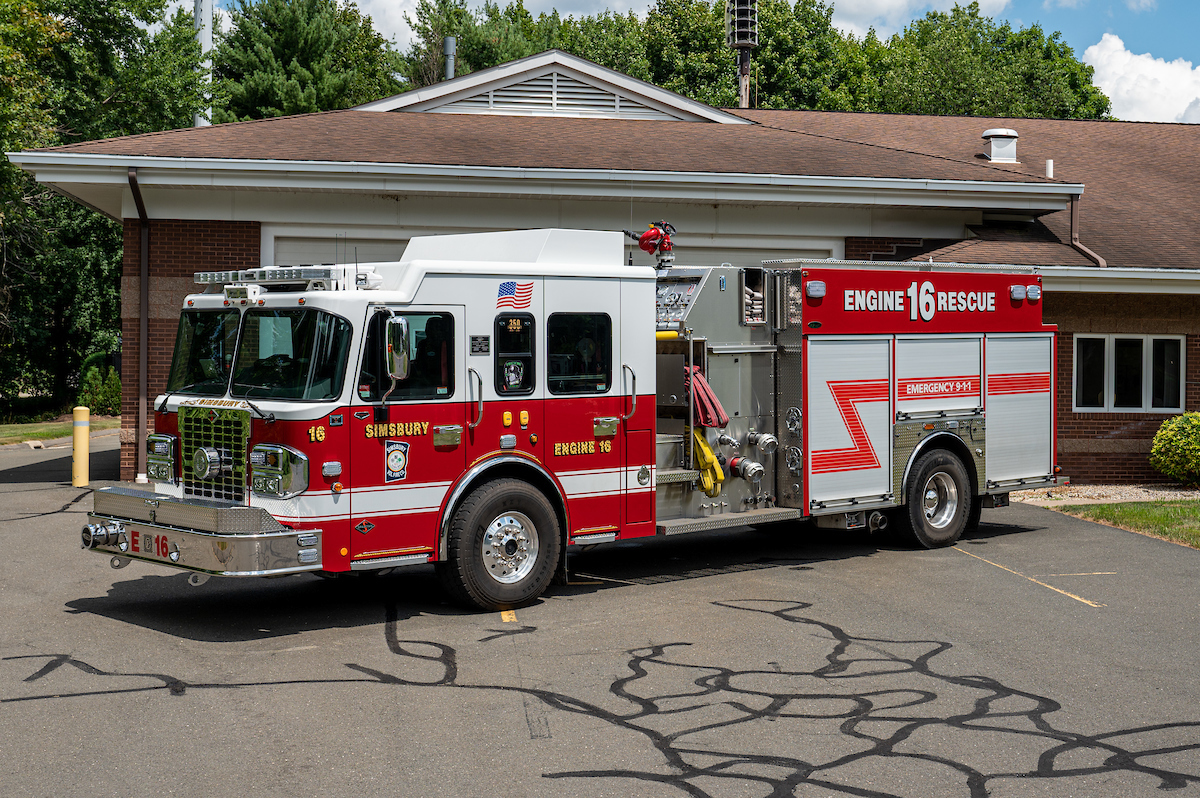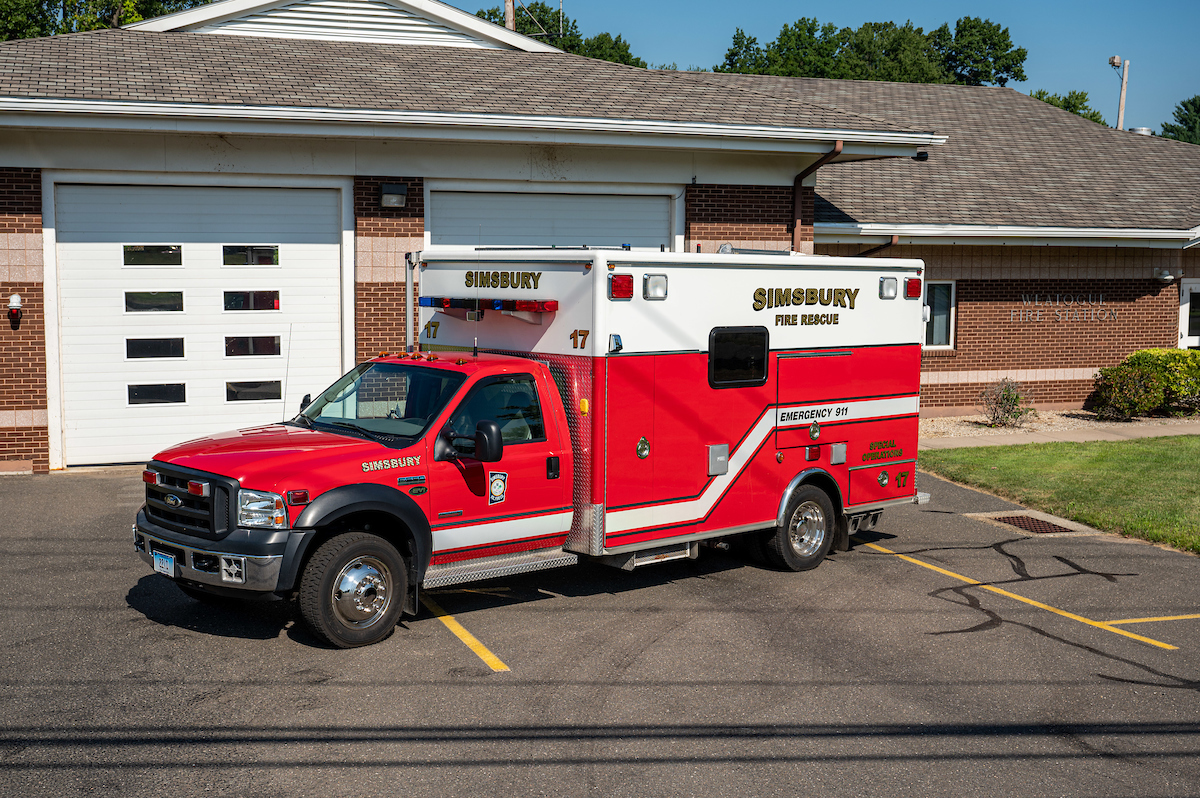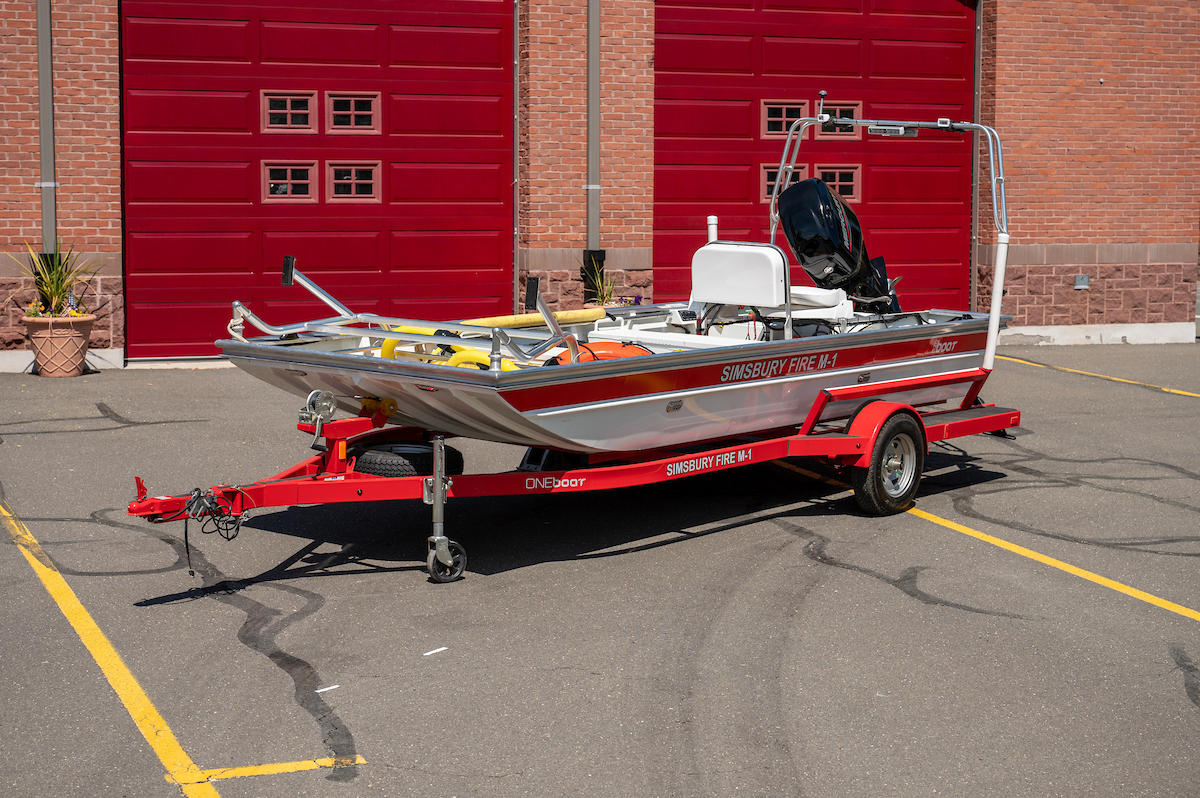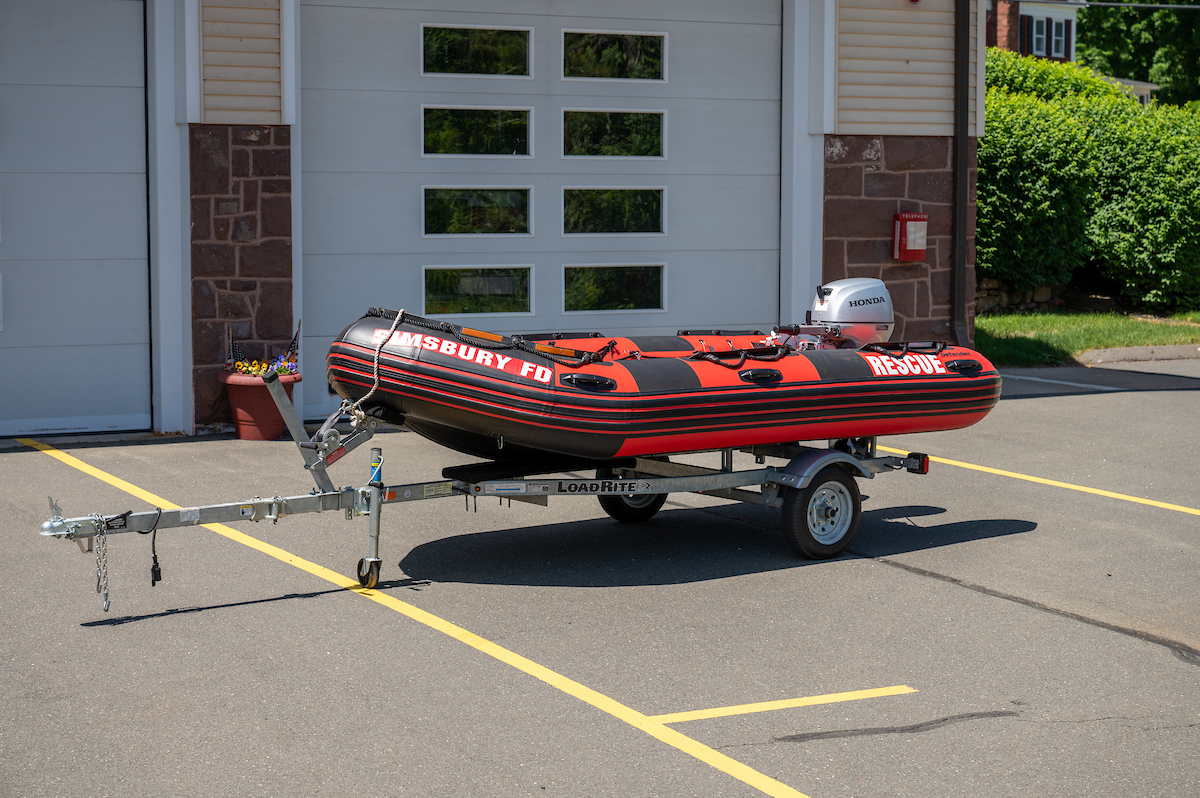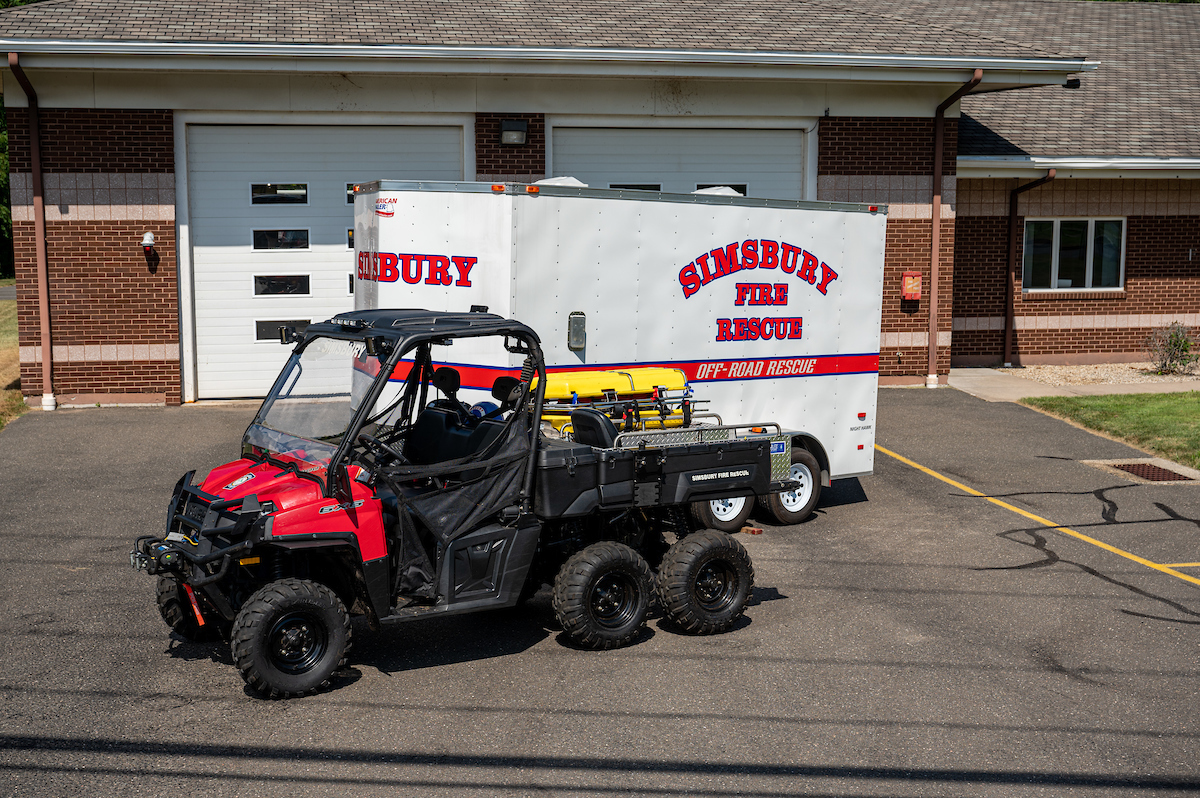The apparatus fleet of the Simsbury Fire District consists of seven engines, two aerials, two rescues, one tanker, a brush unit, five utility vehicles of multiple purposes, two marine units and two equipment trailers. Although each apparatus has a regular fire station assignment, it is not uncommon for apparatus to be moved from one station to another. Occasionally apparatus will have to be taken offline for maintenance. In addition, the Fire Company has instituted a “swap” program to occasionally rotate apparatus to different stations for a one-month period. The resulting effect is that members get exposed to apparatus that they might not necessarily ride on often. This helps to keep the membership familiar with the entire fleet should a replacement apparatus be assigned to their station, or should they find themselves near a station other than their assigned station when an incident is “toned-out.”
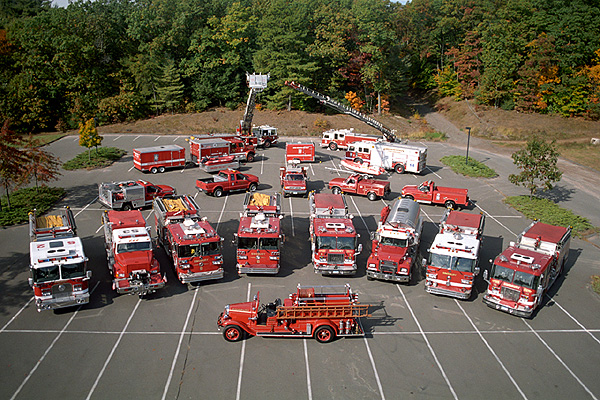
Simsbury’s apparatus fleet along with the Public Fire Education Trailer and our antique fire apparatus Engine 1.
Each fire station is assigned one engine. The seventh engine is of special design and doubles not only as an engine, but also as a heavy brush unit and a spare for when any of the other engines are offline for maintenance. This overlap virtually ensures that every fire station has an engine assigned to it.
The two aerials, two rescues, two marine units, and two brush units are also geographically dispersed to provide the most efficient coverage throughout the town. The fleet’s only tanker is located at the West Simsbury Station. In addition to this being a centralized location for our tanker, much of the surrounding area is not covered by fire hydrants, and the tanker helps augment the available water supply.
APPARATUS FUNCTIONS
Here is a brief description of some of our primary apparatus and how they are utilized to protect Simsbury. The Fire Company and Fire District are very proud of the fact that all engines, aerials and rescues have been equipped with automatic external defibrillators.
The primary function of an engine, also known as a pumper, is to attack a fire or protect exposures through the use of it’s many hoses or deck gun, and to lay hose for the establishment of a water supply. When hydrants aren’t available, engines may be required to supply water by drafting (the process of lifting water to an engine from a static source), or by shuttling water to the scene.
An engine company in Simsbury may be required to perform other duties such as forcible entry, search and rescue, ventilation, and salvage and overhaul. Therefore engine companies carry many tools in addition to just hose such as a standard compliment of ground and roof ladders, various extinguishers, and tools to conduct forcible entry, salvage and overhaul.
Aerial apparatus, also called trucks, provide elevation and reach to conduct operations from. This could mean ventilating a roof, attacking a chimney fire, or providing a means for entry/egress to the upper levels of a structure including rescue. Simsbury’s two aerial apparatus also have piped waterways providing elevated fire streams for direct fire attack or exposure protection.
In addition to an aerial device, these companies carry a generous assortment of roof and ground ladders to provide upper-level access. You will also find many of the same tools as found on the engines, along with gas-powered cut-off saws and chainsaws. Both of the aerial apparatus are equipped with thermal imaging cameras.
The rescue apparatus in Simsbury carry specialized equipment for rescue and other tasks. Hydraulic, pneumatic and electrically powered tools, as well as specialized hand tools for vehicle extrications are carried on the rescues, as is cribbing, air bags and other devices for stabilizing vehicles and other objects. Life-safety rope, rigging hardware, baskets and other gear for high-angle and graded-slope rescue is also stored here.
The rescue companies can also be tasked with the same other assignments as previously mentioned. Therefore you will find many of the same hand tools, along with thermal imagers and gas-powered saws, just to name a few. The rescues also carry and extensive array of emergency medical supplies.
To learn more about these apparatus and the others used to protect the Town and citizens of Simsbury, visit the individual apparatus pages.
FLEET MAINTENANCE
All main-line, emergency road apparatus are the recipient of rigorous, preventative maintenance and inspection. Marine units, utility vehicles and trailers are also subject to a high degree of mechanical scrutiny.
The frontline of vehicle safety and preparedness are the Engineers. Engineers are Fire Company firefighters who volunteer to perform an extensive weekly safety check on their assigned vehicle. This includes but certainly is not limited to checking the visual and audible emergency warning devices, testing the braking systems, performing a nine-step check on all self-contained breathing apparatus, ensuring equipment is in place and good working order, performing a test on major systems (pump, aerial, hydraulic tools, etc.); just to name a few.
Engineers reports are reviewed by District personnel for items that need attention. To keep down-time due to maintenance at a minimum, the District has a maintenance facility and employs a full-time apparatus mechanic.
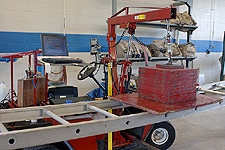
In addition, several other service procedures are performed annually. All road apparatus are taken to a fleet service company for DOT inspection. This affords the Fire District a second set of eyes to make sure that the apparatus conform to all State of Connecticut safety regulations. Any needed service to bring the apparatus back into conformity is performed at the District maintenance facility by the mechanic.
In accordance with National Fire Protection Association standards, all aerial devices and ground ladders are annually inspected and tested by a certified third-party vendor. Pump tests on all fire apparatus pumps and pressure tests on all in-service hose line are completed by the Fire Company in accordance with National Fire Protection Association standards.
